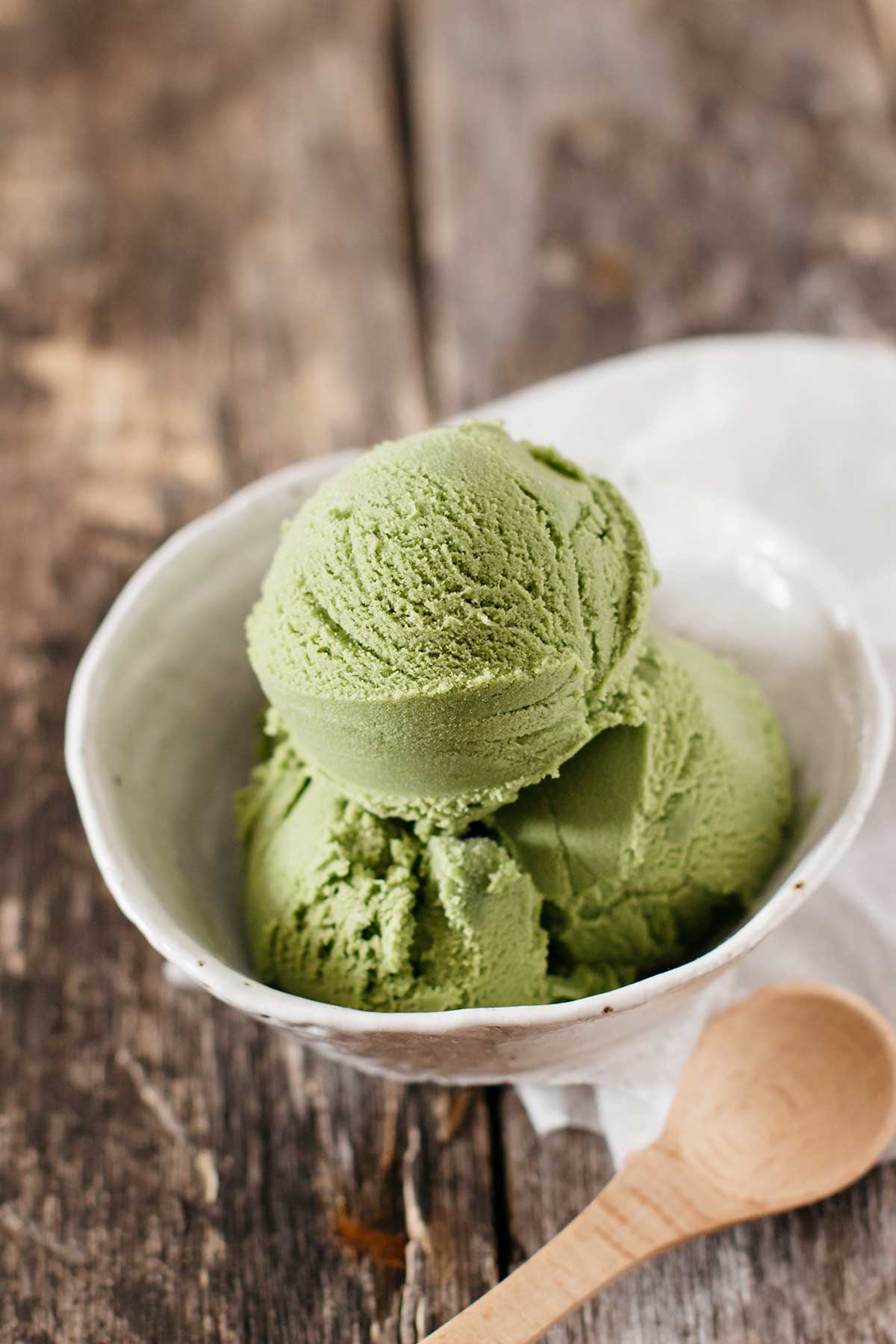
We really recommend that you use a pipping tip when pipping these matcha mochi breads.

Many of you guys have asked in our classic Korean mochi bread post what piping tips we use and if it's necessary, so we thought we should answer that here for the matcha mochi breads too. The batter is ready when it turns into a thick batter consistency and creates a triangle or "v" when the batter falls off. Make sure the egg is fully incorporated in between each addition before adding the next. Once all of the tapioca flour has been incorporated into the initial batter and the dough is only warm to the touch, add the beaten egg in small increments.

The mixture will be mixed and until no dry flour is left, and beaten eggs will be incorporated until the desired consistency has been reached. With this method, the liquid, usually milk, butter, sugar, salt, and flavorings, are combined and heated until hot, then the dry ingredient, the flour, is added. I am not entirely sure where the inspiration for these delicious mochi bread came from, but the cooking method is definitely a variation of the classic French pastry method: paté a choux. In this case, simply place the saucepan onto the stovetop at medium heat and constantly stir it until the batter is thick like baby food. If the batter doesn't thicken up, it's most likely because the milk mixture wasn't hot enough. It is very important that the initial batter (after adding flour and matcha to the milk mixture) consistency is thick like baby food. We usually use all-purpose flour because we always have a stock of it in our pantry.
Matcha mochi free#
So feel free to substitute the 35 grams of all-purpose flour for bread flour if you wish. We've tested this recipe with both bread flour and all-purpose flour, and the result is not that noticeably different. A good quality, culinary grade matcha will do just fine, but some flavors and color will be slightly compromised, of course. With all that said, you don't have to purchase the best ceremonial grade matcha out there. Especially after baking, the vibrancy of matcha usually will dull a bit. The better the matcha, the greener and vibrant the color will be. The second reason why we highly recommend using a good quality matcha is for the color. The lesser matcha powders tend to provide more bitter, astringent flavors of green tea. The better grade matcha used, the more floral and green tea essence you will taste.


First, the quality of matcha is important for the matcha flavor in these mochi breads. This is especially important for making these matcha mochi breads. Like for most matcha recipes, we always recommend using good matcha. These matcha mochi breads are called "mochi" for their soft, chewy texture contributed by the tapioca flour used in the recipe. Unlike regular mochi, these matcha mochi breads are not made with sweet rice flour (or glutinous rice flour). We hope you guys enjoy this matcha version of of our cute "dino eggs"! What makes mochi bread "mochi" Of course, we couldn't deny it! Both Kyong and I were soooo excited for this green, floral version of these adorable "dino eggs"! We thought the green made the pastry more prehistorically appealing? Lol. Since we shared our classic Korean mochi bread back in the fall, we've got numerous requests to make different flavors of mochi breads, particularly, matcha flavored ones. Still speckled with black sesames, these green tinted "dino eggs" are perfect afternoon and/ or tea snacks! They are slightly crispy on the outside, tenderly chewy on the inside, and have the beautiful flavors of floral matcha and toasted black sesame. This matcha mochi breads recipe is a small-batch adaptation of our classic Korean mochi breads.


 0 kommentar(er)
0 kommentar(er)
